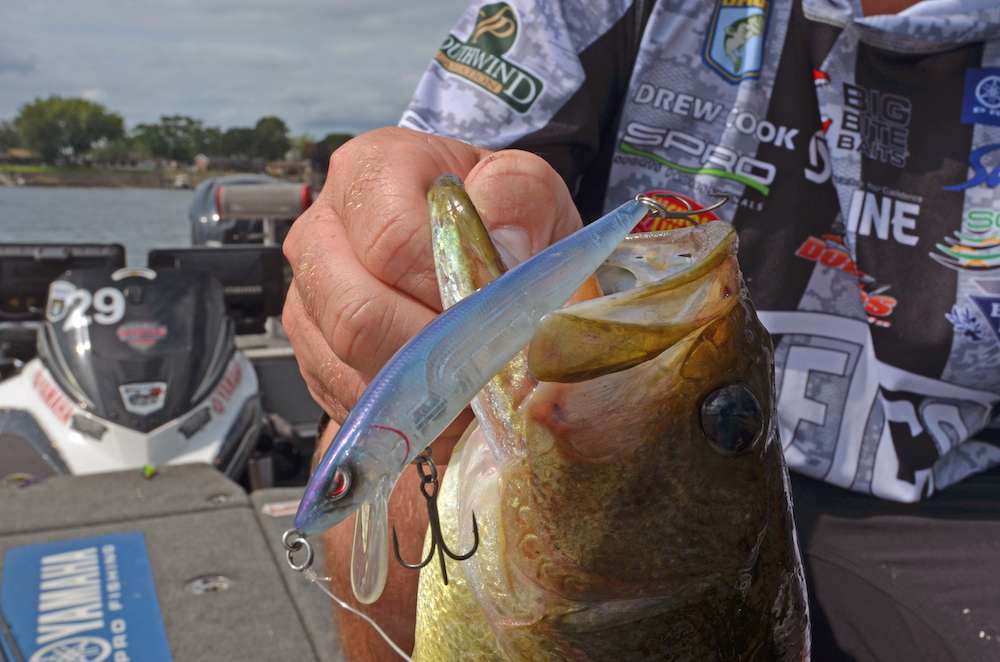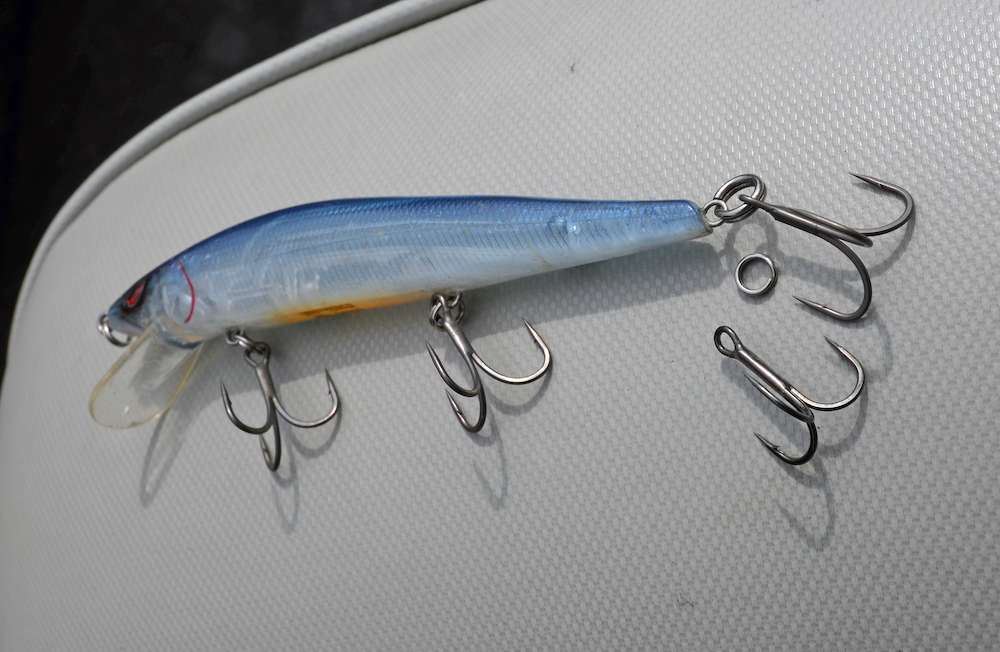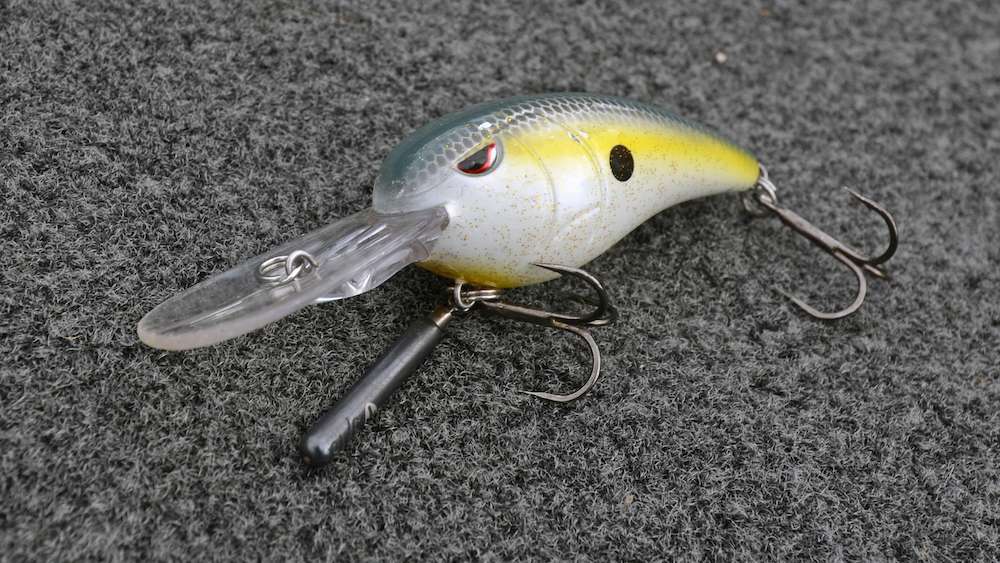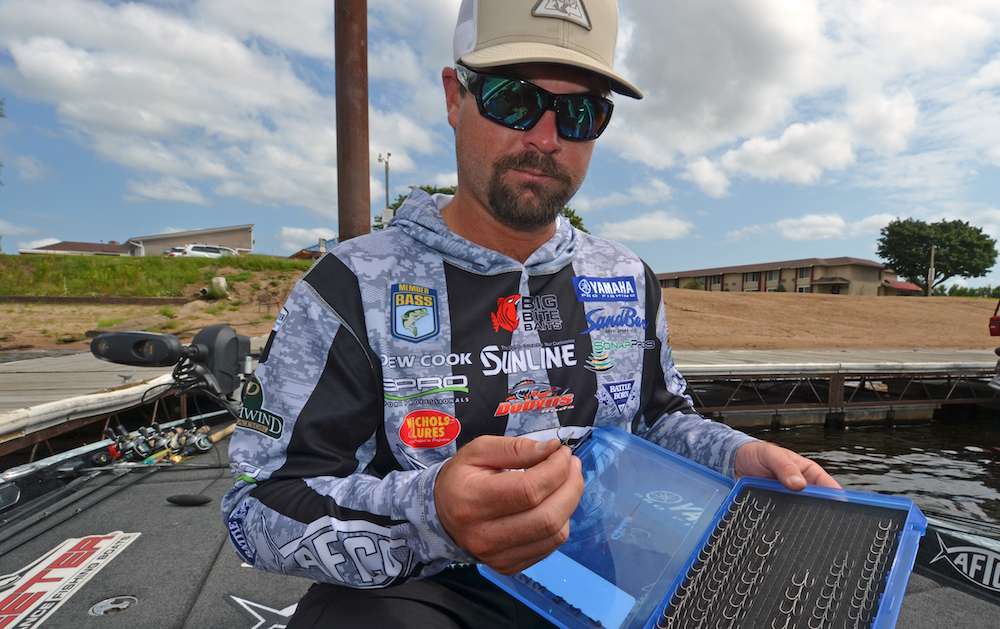
Few anglers are as fanatical about tinkering with lures as Florida Bassmaster Elite Series pro Drew Cook. He often spends hours casting into his mother-in-law’s swimming pool so he can see how lures respond to his relentless tweaking.
He has learned that even subtle modifications can make a significant difference, especially with suspending jerkbaits. One of Cook’s favorite tricks is to put heavier hooks and split rings on suspending jerkbaits to make them sink.
“You’d be surprised how little of a change makes a difference,” Cook said. “I’ve got some jerkbaits to sink one foot a second.”
He upsizes the rear hook and split ring when he wants a jerkbait to slide backwards as it sinks. With the Spro McStick 110 jerkbait, he goes with a No. 2 Gamakatsu G Finesse hook and a “beefed up” split ring.

To make a jerkbait stay level as it sinks, Cook upsizes all three hooks. The main reason he wants his jerkbaits to sink is to get them down quickly to bass he sees suspended on Garmin LiveScope sonar.
“If I see a bass in 10 feet of water I have to make a super long cast to get a stock jerkbait down to 8 feet,” Cook said. “That gives the bass a lot of time to move away.”
A sinking jerkbait allows Cook to make a much shorter cast 10 to 15 feet beyond the bass. Because the bait rapidly sinks to the proper depth, he has a better chance of working it into the strike zone before the bass moves.
“I always cast beyond the bass and work the bait to it,” Cook said. “I want the bait to surprise the fish.”
When Cook wants to fish a suspending jerkbait in shallow water, he puts oversized hooks on a slow floating Spro McStick 115. He opted for the largest hooks that would fit on this bait when he competed in a 2021 Elite Series event at Lake Fork, Texas, a trophy bass Mecca.
“I was fishing in 3 feet of water,” Cook said. “I had a 1/0 treble on the front and back and a No. 2 in the middle.”
Crankbait hooks
Cook generally switches to larger, heavier treble hooks when fishing crankbaits.
“I like my crankbaits to look like they have eagle talons,” he said.
He believes that short shank, extra heavy treble hooks are the greatest thing that ever happened for crankbait fishing. He opts for the largest hooks that can be used without catching each other. The heavier hooks increase the crankbait’s depth and their bigger bite grabs more meat.
Weighted crankbaits
Cook doesn’t affix lead tape to jerkbaits, but does so with crankbaits to get them deeper or to make them suspend. A suspending crankbait pays dividends when he sees bass with forward-looking sonar.
“With LiveScope I can see when a fish is following my crankbait,” Cook said. “When I stop cranking, the bait sits right there in front of him. They can’t stand it. A lot of times they bite because they run into it.”
If he wants a crankbait to sink down to leviathans hanging in the depths, he adds a drop-shot weight to the front split ring alongside the treble hook. This requires a weight that has a tie-on line attachment and not the pinch-style line grabber found on many drop-shot weights. Cook employs 1/8- to 1/2-ounce Titan Tungsten weights.

He generally uses this tweak to get smaller crankbaits down where only the biggest, long-lipped cranks can dive. Spro’s 1/2-ounce RkCrawler 55, which Runs 9- to 14-feet, is a player here. With a 1/2-ounce drop-shot weight attached, Cook lets the RkCrawler 55 sink 20 feet or more before beginning his retrieve.
Besides getting deep the weighted bait stays at that depth much longer than a floating crankbait does. That’s because a floating crankbait spends more time diving and climbing back to the boat than running at its maximum depth.
Cook employs a weighted RkCrawler 55 when fishing where offshore bass are being hammered by big crankbaits. He points to TVA lakes in the middle of June as an example.
“The bass don’t see a small profile crankbait on deep ledges,” Cook said. “It will get you a few more bites when they stop hitting bigger baits.”
Braided line ‘split rings’
Cook replaces the metal split rings on some of his jerkbaits and crankbaits with tiny loops tied from braided line. The loops make non-rattling crankbaits even more silent. They also prevent a bass from getting leverage on a hook and throwing the bait because the hooks twist freely on the braid.
You can find videos that show how to tie braided hook loops with an internet search on “braided line split rings.” With jerkbaits and small to medium crankbaits, Cook ties loops from 30- or 40-pound braid. He steps up to 60-pound braid with big crankbaits.






